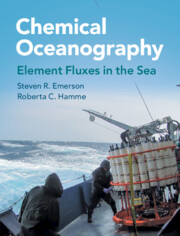250 results
545 Factors that impact the success of community-engaged research: perspectives from experienced researchers and community partners
- Part of
-
- Journal:
- Journal of Clinical and Translational Science / Volume 8 / Issue s1 / April 2024
- Published online by Cambridge University Press:
- 03 April 2024, pp. 162-163
-
- Article
-
- You have access
- Open access
- Export citation
Policy Diffusion, Environmental Federalism, and Economic Efficiency – How Institutions Influence the Implementation of EU Legislation in Two Nordic Countries
-
- Journal:
- Journal of Benefit-Cost Analysis , First View
- Published online by Cambridge University Press:
- 26 February 2024, pp. 1-23
-
- Article
-
- You have access
- Open access
- HTML
- Export citation
Psychological reactance, misinformation, and distrust: A mixed methods analysis of COVID-19 vaccine uptake
-
- Journal:
- Journal of Clinical and Translational Science / Volume 8 / Issue 1 / 2024
- Published online by Cambridge University Press:
- 30 January 2024, e48
-
- Article
-
- You have access
- Open access
- HTML
- Export citation
The ACTIV-6 Stakeholder Advisory Committee: a model for virtual engagement in decentralized clinical trials
-
- Journal:
- Journal of Clinical and Translational Science / Volume 7 / Issue 1 / 2023
- Published online by Cambridge University Press:
- 20 November 2023, e264
-
- Article
-
- You have access
- Open access
- HTML
- Export citation
Nicholas Q. Emlen, Language, coffee, and migration on an Andean-Amazonian frontier. Tucson: University of Arizona Press, 2020. Pp. 272. Hb. $60.
-
- Journal:
- Language in Society / Volume 52 / Issue 2 / April 2023
- Published online by Cambridge University Press:
- 27 April 2023, pp. 353-354
- Print publication:
- April 2023
-
- Article
- Export citation
Assessing the welfare level of intensive fattening pig farms in Germany with the Welfare Quality® protocol: does farm size matter?
-
- Journal:
- Animal Welfare / Volume 27 / Issue 3 / August 2018
- Published online by Cambridge University Press:
- 01 January 2023, pp. 275-286
-
- Article
- Export citation
200 Benefits and Challenges of Human-Centered Design: Perspectives from Research Teams
-
- Journal:
- Journal of Clinical and Translational Science / Volume 6 / Issue s1 / April 2022
- Published online by Cambridge University Press:
- 19 April 2022, p. 29
-
- Article
-
- You have access
- Open access
- Export citation
Appendix D - Atmospheric Mole Fractions, Molar Volumes, Saturation Concentrations, and Henry’s Law Constants for Gases
-
- Book:
- Chemical Oceanography
- Published online:
- 20 April 2022
- Print publication:
- 07 April 2022, pp 362-368
-
- Chapter
- Export citation

Chemical Oceanography
- Element Fluxes in the Sea
-
- Published online:
- 20 April 2022
- Print publication:
- 07 April 2022
-
- Textbook
- Export citation
Appendix G - Apparent Solubility Products of Calcite and Aragonite
-
- Book:
- Chemical Oceanography
- Published online:
- 20 April 2022
- Print publication:
- 07 April 2022, pp 379-383
-
- Chapter
- Export citation
Reviews
-
- Book:
- Chemical Oceanography
- Published online:
- 20 April 2022
- Print publication:
- 07 April 2022, pp ii-ii
-
- Chapter
- Export citation
Contents
-
- Book:
- Chemical Oceanography
- Published online:
- 20 April 2022
- Print publication:
- 07 April 2022, pp v-x
-
- Chapter
- Export citation
Appendix 2A.3 - The Kinetics of Air–Sea Gas Exchange
- from 2 - Geochemical Mass Balance: Chemical Flow across the Ocean’s Boundaries
-
- Book:
- Chemical Oceanography
- Published online:
- 20 April 2022
- Print publication:
- 07 April 2022, pp 80-95
-
- Chapter
- Export citation
8 - The Role of the Ocean in the Global Carbon Cycle
-
- Book:
- Chemical Oceanography
- Published online:
- 20 April 2022
- Print publication:
- 07 April 2022, pp 313-357
-
- Chapter
- Export citation
Appendix B - Fundamental Constants and Unit Conversions
-
- Book:
- Chemical Oceanography
- Published online:
- 20 April 2022
- Print publication:
- 07 April 2022, pp 359-360
-
- Chapter
- Export citation
Index
-
- Book:
- Chemical Oceanography
- Published online:
- 20 April 2022
- Print publication:
- 07 April 2022, pp 384-388
-
- Chapter
- Export citation
2 - Geochemical Mass Balance: Chemical Flow across the Ocean’s Boundaries
-
- Book:
- Chemical Oceanography
- Published online:
- 20 April 2022
- Print publication:
- 07 April 2022, pp 44-95
-
- Chapter
- Export citation
Appendix 6A.2 - Derivation of the Rayleigh Fractionation Equation
- from 6 - Stable Isotope Tracers
-
- Book:
- Chemical Oceanography
- Published online:
- 20 April 2022
- Print publication:
- 07 April 2022, pp 267-273
-
- Chapter
- Export citation
Appendix A - Critical Quantities for the Ocean–Atmosphere System
-
- Book:
- Chemical Oceanography
- Published online:
- 20 April 2022
- Print publication:
- 07 April 2022, pp 358-358
-
- Chapter
- Export citation
4 - Life in the Deep Ocean: Biological Respiration
-
- Book:
- Chemical Oceanography
- Published online:
- 20 April 2022
- Print publication:
- 07 April 2022, pp 144-176
-
- Chapter
- Export citation



